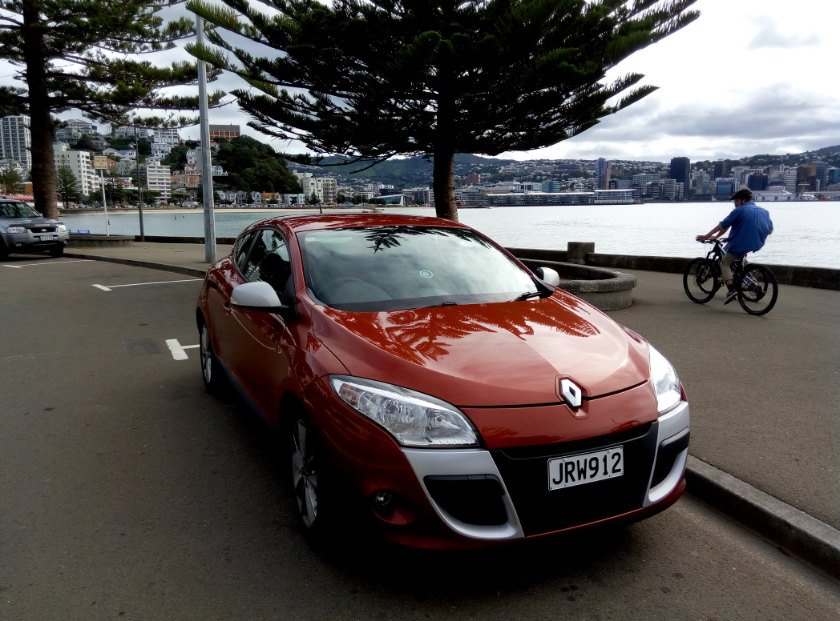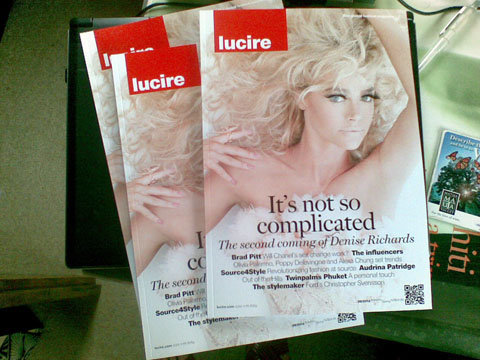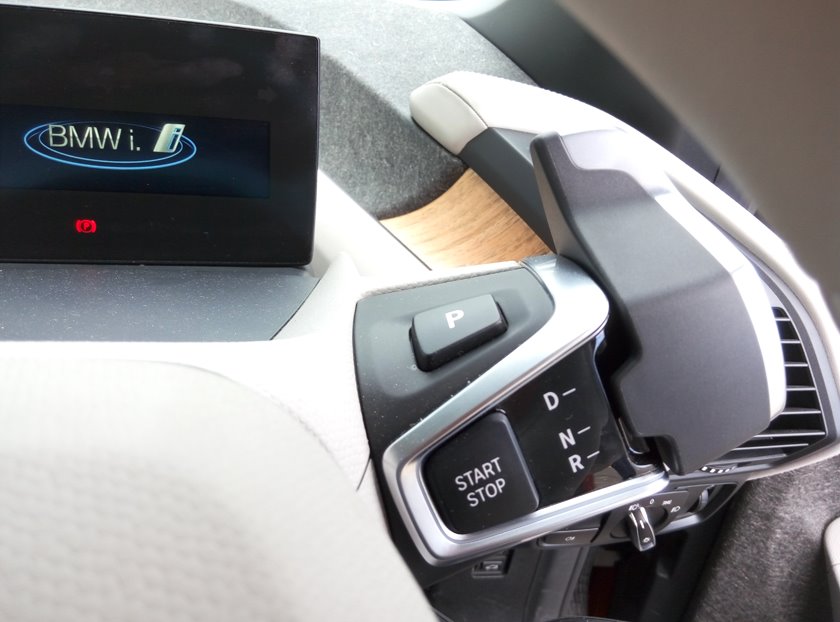Originally published at Drivetribe, but as I own the copyright it only made sense to share it here for readers, too, especially those who might wish to buy a car from abroad and want to do the job themselves. It was originally written for a British audience.

Above: The lengths I went to, to make sure I didn’t wind up buying a car with an automatic transmission: source it from the UK and spend ten months on the process.
One consequence of Brexit was the pound falling, which makes buying out of Blighty very tempting for foreigners. When it comes to buying a car, the savings can be substantial enough for a buyer in the antipodes.
My situation in New Zealand was neither driven by politics nor currency: it was the lack of manual-transmission cars. When I last bought a car for myself in 2004, the market was roughly 50–50 between manuals and automatics. Today that figure is 90 per cent in favour of automatics, meaning those of us who prefer shifting gears ourselves face a major difficulty. We either limit ourselves to the few cars that come on to the market that are manuals, or we switch. Considering it was my own money, and a five-figure sum at that, I wasn’t about to contemplate getting something that I didn’t like. Britain, it seemed, would have to be the source of my next car.
There were certain circumstances that made this a lot easier.
First, you need friends in the UK.
Secondly, you should browse Auto Trader, Parkers and other sites regularly for months on end to get a feel of the market.
Third, you should be looking for something that’s relatively new, to ensure compliance with the laws of both the UK and your own.
When my old Renault Mégane I Coupé was written off in an accident, the logical thing would be to buy the Mégane III Coupé. However, if you live in a right-hand-drive country and you’re not in the UK, Ireland or South Africa, you’re out of luck, unless you fancy going to an RS. And I simply didn’t need 250-plus horsepower to go to the post office or up the coast.
There were two powerplants common to Renaults in New Zealand: the 110 bhp 1·6, and the 2·0 automatic. That left me with one choice, and 110 bhp was sufficient for what I needed. I also looked forward to the better fuel economy, even if New Zealanders pay less at the pump than Brits.
I was fortunate that I didn’t need a replacement car in a hurry. For years I had a “spare car”, one that my father had bought and I could use now that he had developed Alzheimer’s. The other stroke of luck was that I had contemplated getting a newer Mégane III Coupé anyway, and had been browsing UK sites for about six months at that point. I knew roughly what a good deal looked like. Finally, the esteemed motoring editor, Mr Keith Adams, and one other school friend, Philip, had offered to check out cars should I spot anything in their area.
While my circumstances were unique, there are plenty of other reasons to look to the UK for cars.
A friend looking for a Volkswagen Eos reckoned he would save NZ$10,000 (£5,850) by sourcing one from the UK. This is largely fuelled by the greater depreciation on UK second-hand cars, and the savings potentially mount on flasher motors, such as Audi Q7s or Bentleys.
While Japan is closer, and the source of many used cars in New Zealand, some buyers have had to buy new radios to match New Zealand frequencies. There’s also the disadvantage of dealing in a foreign language with a very different legal system should you choose to do it yourself.
The disadvantage of a UK import is that speedometers will be in mph, whereas New Zealand adopted the newfangled metric system decades ago. However, on a more modern car with a digital dashboard, the switch shouldn’t be an issue, and that was the case with the Mégane.
For a Kiwi buyer, the first step is to check the New Zealand Transport Authority (NZTA) website, which has useful worksheets on private car importation.
In summary, the car must comply with New Zealand standards, and it helps—for now—that cars that have EU type approval will. The car must have a vehicle approval plate or sticker, or a statement of compliance. The NZTA worksheets and website are detailed and go through further specifics.
You should, for peace of mind, order an AA or Dekra inspection. AA members in New Zealand can expect a discount from AA in the UK, and this shouldn’t exceed £200. Any faults need to be remedied before you purchase the car, or you should walk away.
Of course, you need to be able to prove the ownership of the vehicle: that means an invoice showing that you’ve purchased it (this should have the VIN on it), plus the V5 registration document. Since it’s being exported outside the UK, the relevant part of the V5 noting the car will be leaving the country will have been sent to the Department for Transport by the seller. The seller needs to put this in the courier to you.
I advise strongly that you use a company specializing in the importation. You can do a lot yourself, but it pays to have an extra pair of eyes to ensure you’ve dotted the is and crossed the ts, and in New Zealand, that’s where Jake Williams and Dan Hepburn at Online Logistics of Auckland came in.
Online Logistics isn’t interested in profiting based on the price of your car, unlike some services. They set standard fees for shipping, and arrange insurance, which it’ll need on the way to New Zealand. They do ask that the car departs from Felixstowe, and they will ship it to Auckland.
They will require the VIN, so they can double-check that the car meets the required standards, the invoice, and the original copy of the V5.
Once it’s on New Zealand shores, it has to go through several inspections.
The first is an inspection by the Ministry of Primary Industries, which makes sure that there aren’t any bugs. It could order that the car be fumigated, and this can set you back around NZ$400. Once done, you’ll get an MPI sticker saying the car’s passed the biosecurity inspection.
Customs will then sting you GST (the equivalent of VAT) on cost, insurance and freight.
An NZTA-approved organization will then inspect the car to check for structural faults. Online Logistics took care of this part, so you don’t need to hunt for an approved one yourself. Once that’s done, you’ll get a pink sticker from NZTA.
The fourth step is getting the car certified. Again, Online Logistics has a company it contracts to do this, and this is where you’re likely to see your car for the first time. Certification will confirm that the car meets safety and emission standards, gets the VIN recorded into the database, gives you a registration form so you can get the car registered in New Zealand, and issues a warrant of fitness (MOT). Certification can be strict: cars that have had a poor repair job done in the UK will not pass until it is redone in line with New Zealand standards, and this is where the importation process can fall to pieces. That’s why it’s important to have that check done in the UK before purchase. Stay well away from category D cars, and aim for low miles.
Having identified the model I wanted, I had to trawl through the websites. The UK is well served, and some sites allow you to feed in a postcode and the distance you’re willing (or your friend’s willing) to travel.
However, if you rely on friends, you’ll need to catch them at the right time, and both gentlemen had busy weekends that meant waiting.
VAT was the other issue that’s unfamiliar to New Zealanders. GST is applied on all domestic transactions in New Zealand, but not on export ones. This isn’t always the case in the UK, and some sellers won’t know how any of this works.
One of the first cars I spotted was from a seller who had VAT on the purchase price, which logically I should get refunded when the car left the country. I would have to pay the full amount but once I could prove that the car had left the UK, the transaction would be zero-rated and I would get the VAT back. I was told by the manager that in 11 years of business, he had never come across it, and over the weeks of chatting, the vehicle was sold.
Car Giant, in London, was one company that was very clued up and told me that it had sold to New Zealanders before. They’re willing to refund VAT on cars that were VAT-qualifying, but charged a small service fee to do so. The accounts’ department was particularly well set up, and its staff very easy to deal with long-distance.
Evans Halshaw, however, proved to be farcical. After having a vehicle moved to the Kettering branch close to Keith’s then-residence after paying the deposit, and having then paid for an AA inspection, the company then refused to sell it to me, and would only deal with Keith.
Although the company was happy to take my deposit, Keith was soon told, ‘we will need payment to come from yourself either by debit card or bank transfer as the deal is with yourself not Mr Yan,’ by one of its sales’ staff.
I wasn’t about to ask Keith to part with any money, If I were to transfer funds to his account, but not have the car belong to me, and if Keith were to then transfer ownership to me without money changing hands, then the New Zealand Customs would smell a rat. It would look like money laundering: NZTA requires there to be a clear chain of ownership, and this wasn’t clear. Evans Halshaw were unwilling to put the invoice in my name.
I’m a British national with a UK address—again something a lot of buyers Down Under won’t have—but Evans Halshaw began claiming that it was ‘policy’ not to sell to me.
The company was never able to provide a copy of such a policy despite numerous phone calls and emails.
Essentially, for this to work and satisfy Customs on my end, Keith would have to fork out money, and I would have to pay him: a situation that didn’t work for either of us.
Phil, a qualified lawyer, offered to head into another branch of Evans Halshaw and do the transaction exactly as they wanted: head there with ‘chip and PIN’, only for the company to change its tune again: it would not sell to me, or any representative of mine.
This farce went on for a month and involved a great deal of calls from me into the small hours of the morning.
The matter eventually went to the group’s lawyer, David Bell, and between him and me, it was sorted in 10 minutes.
Evans Halshaw did indeed have a policy not to sell to a foreigner, never mind that he was also a Briton. What their first staffer should never have done was take my deposit in the first place.
Despite knowing it was me who paid the deposit, the Kettering dealer began believing it was Keith who was the buyer.
When Mr Bell knew all the facts, there was a moment when the penny dropped for us both: he had been told that Keith was the buyer all along, and advised accordingly. Once I knew where the mix-up was, everything made sense.
It wasn’t helped by belligerent staff who refused to answer questions directly.
However, on knowing of their error, Evans Halshaw refunded my deposit (albeit minus the credit card fees I had paid) and offered to refund the AA check, in exchange for the report. I willingly gave them the report, but the second refund never materialized. Neither the dealer principal at Kettering nor Mr Bell responded, despite reminders, and I found myself £182 out of pocket, along with goodness knows how much in long-distance phone charges. I still wonder how this is one of the country’s largest dealer groups, with this blatant disregard for the customer.
Two weeks later, the perfect Mégane popped up. It was all a blessing in disguise. It was the colour (Cayenne orange) of the car I had on my computer wallpaper years before. The mileage was very low. And another friend, Andrew, was willing to pop by and look at it, sold by a very easy-going seller, Andy Mudge of Thames Fleet Purchasing. In fact, he proved so amenable I referred others to him, and he was more than happy, as with many other dealers I had spoke to in the UK since the Evans Halshaw affair, to sell to a British national based abroad.
The car passed the Dekra check with next to no issues, and Andy was willing to cap the freight charges of the car from his Maidenhead property to the port for £100. (It’s advisable to have the car transported, rather than driven, to the port, as I won’t have paid for the tax as the new keeper.)
The car was non-VAT qualifying, making life easier for both parties. I paid Andy the amount by wire transfer, added a pony on top to cover the courier of documents (V5 and handbooks) and the spare key.
The one feeling I hadn’t expected was to see thousands of pounds leave my account and have nothing to show for it. The car took just under two months before I witnessed it for the first time, having flown up to Auckland to collect it (another NZ$100), with a 600 km journey south back to its new home in Wellington.
Many months later, I’m thrilled with my purchase. There are, to my knowledge, only two non-RS Mégane III Coupés in New Zealand, both in the same colour. It has an engine for which I can get parts, and there are sufficient commonalities with the Méganes sold here when it comes to brake pads and other items. It had taken a considerable amount of time but it was eventually worth it. After all, if it’s your money, you should get what you want. If you don’t want to drive the standard New Zealand car—and looking around that appears to be a Toyota Auris Automatic—then the UK is a very ready source of cars.







3 thoughts on “Consumer’s choice: how I bought a car from the UK over the ’net and shipped it home”